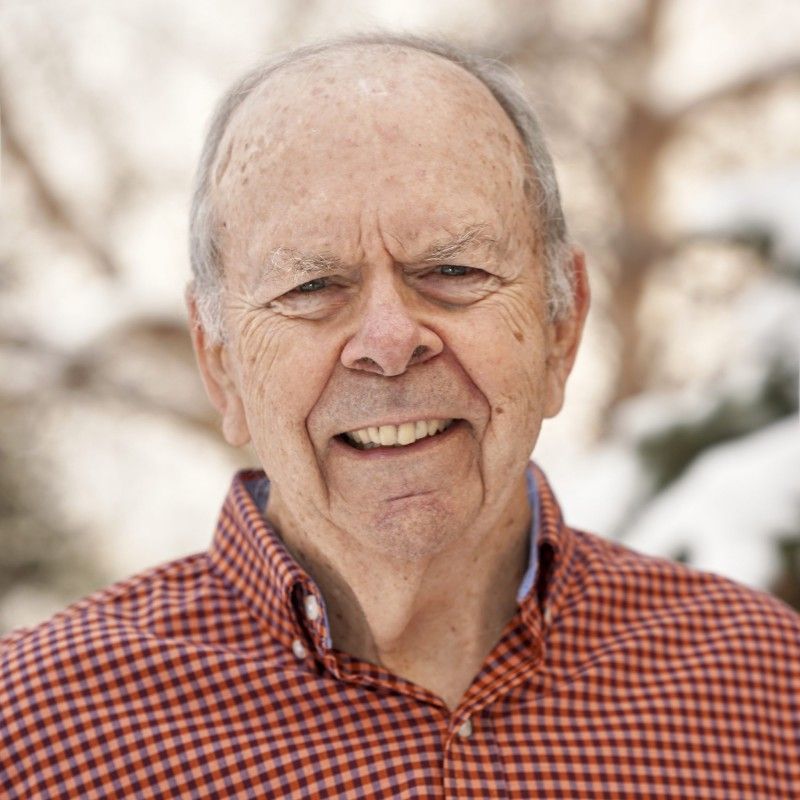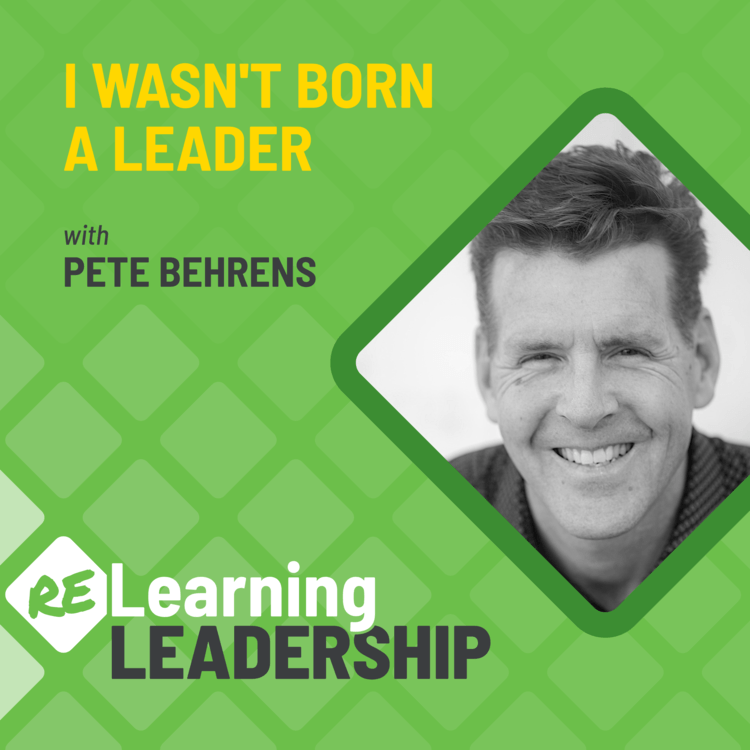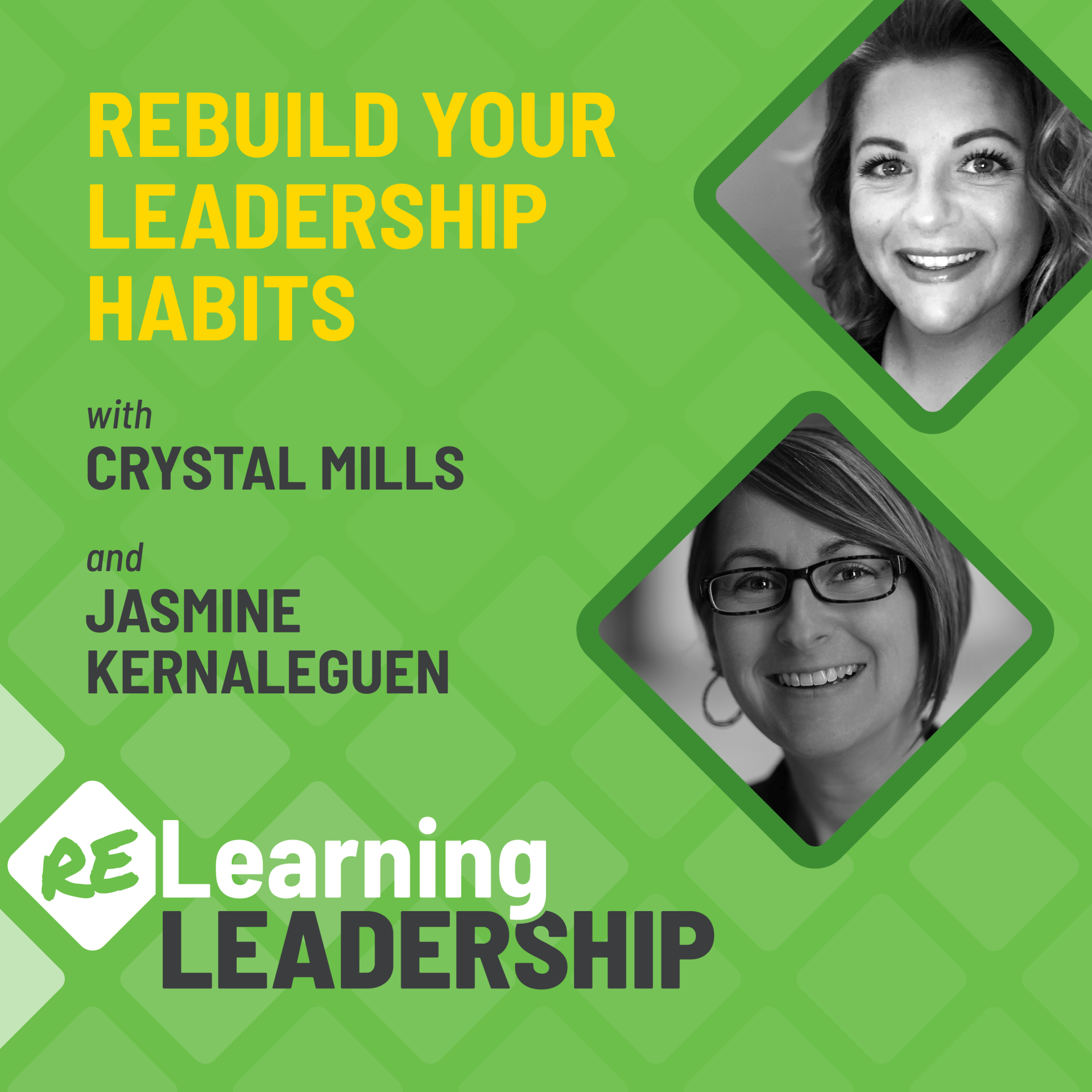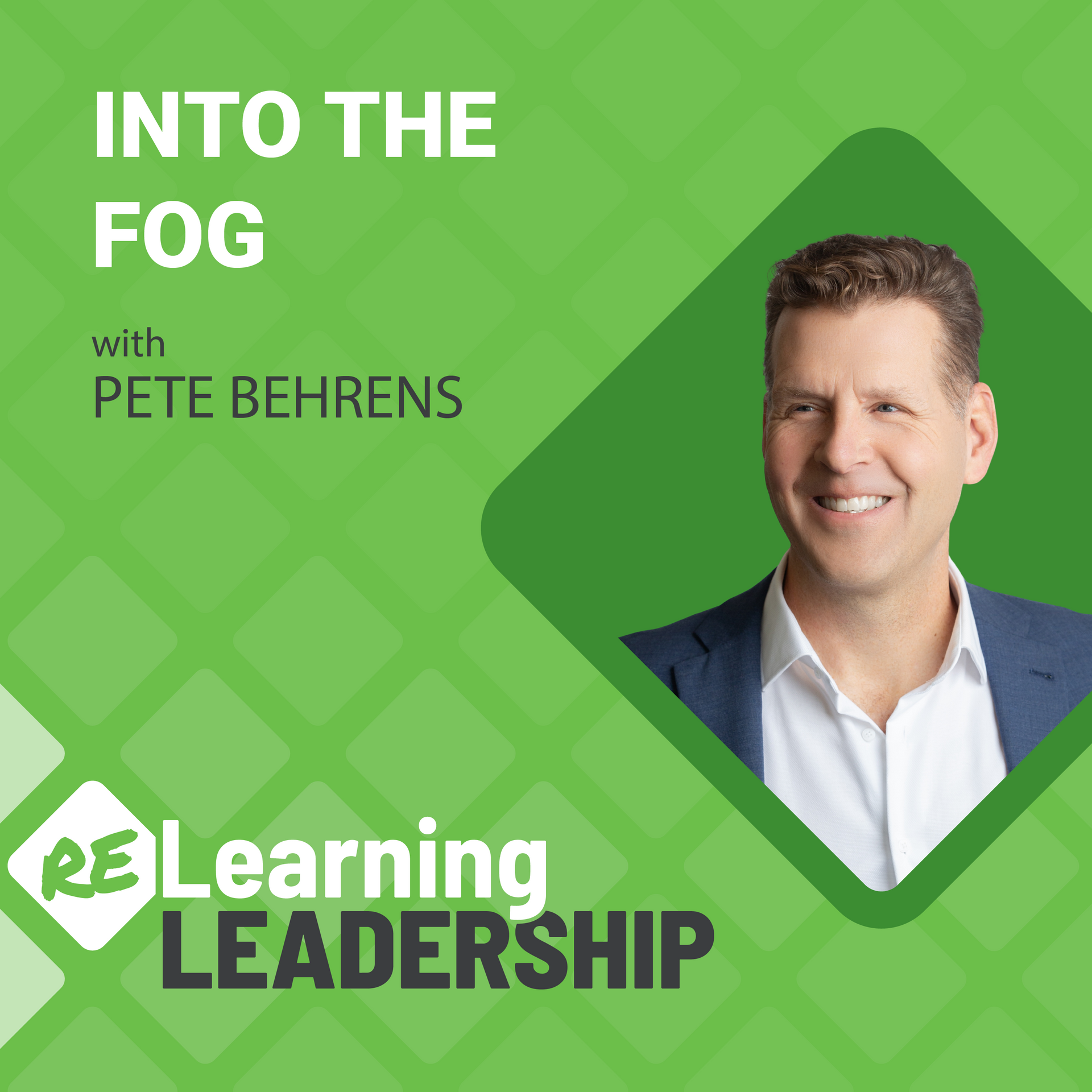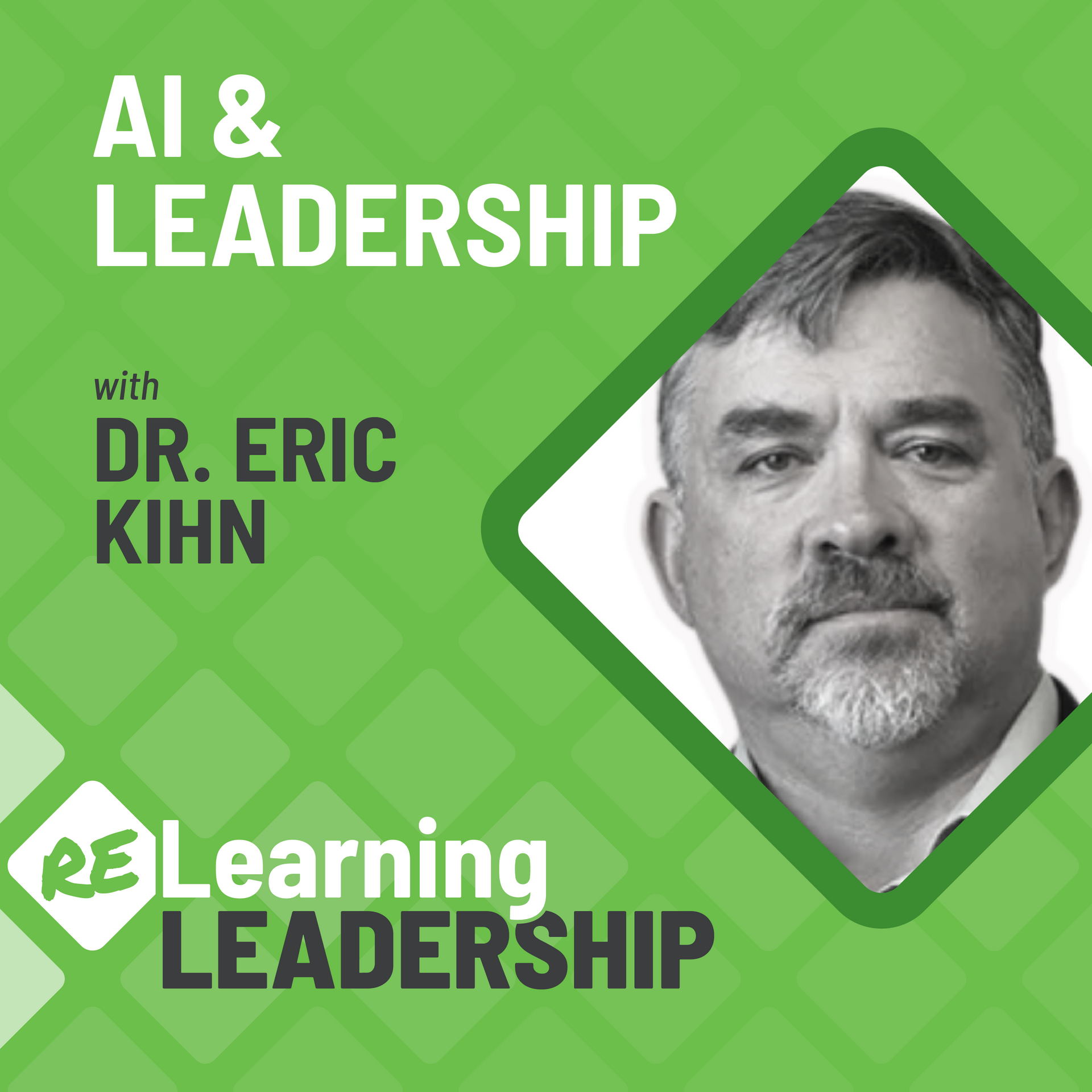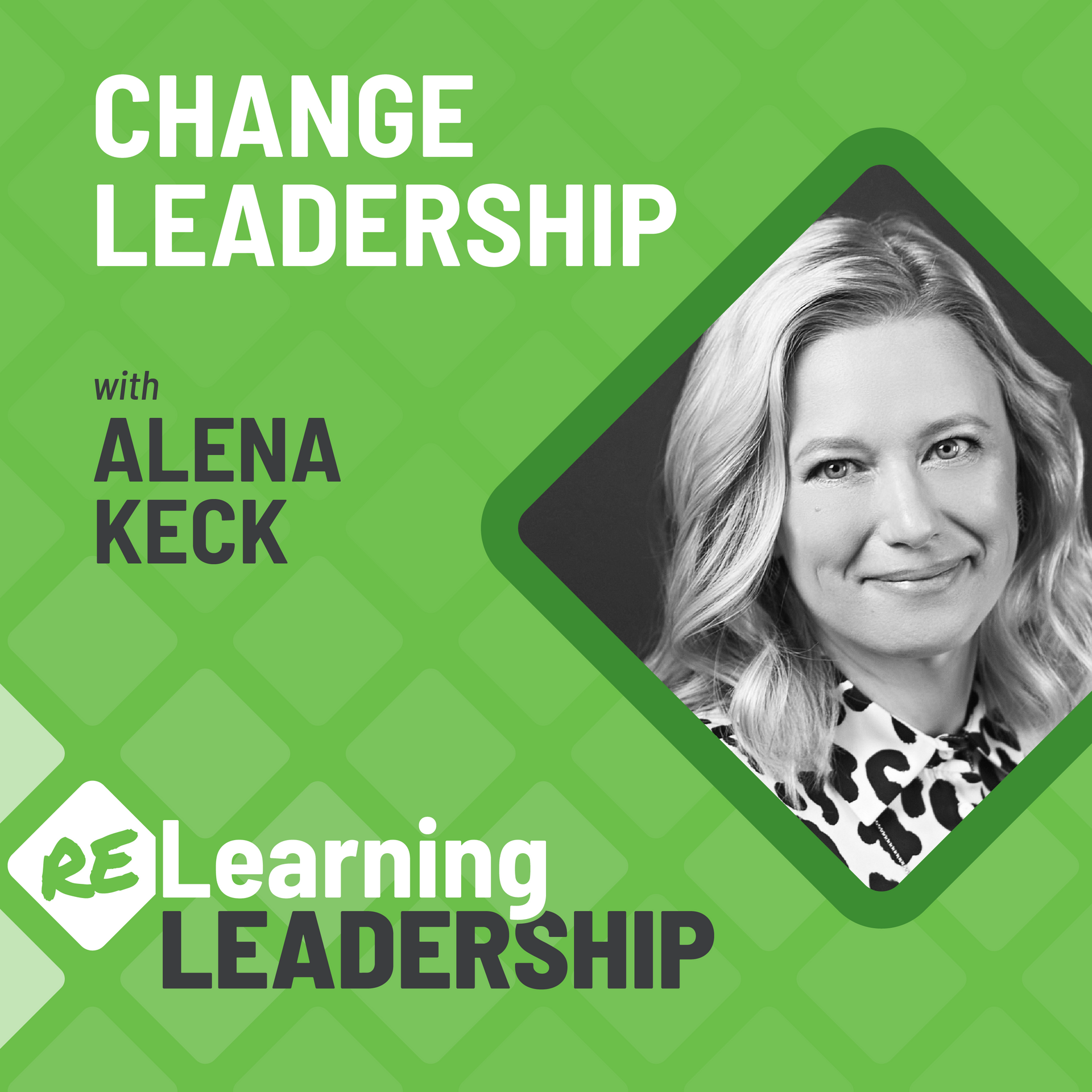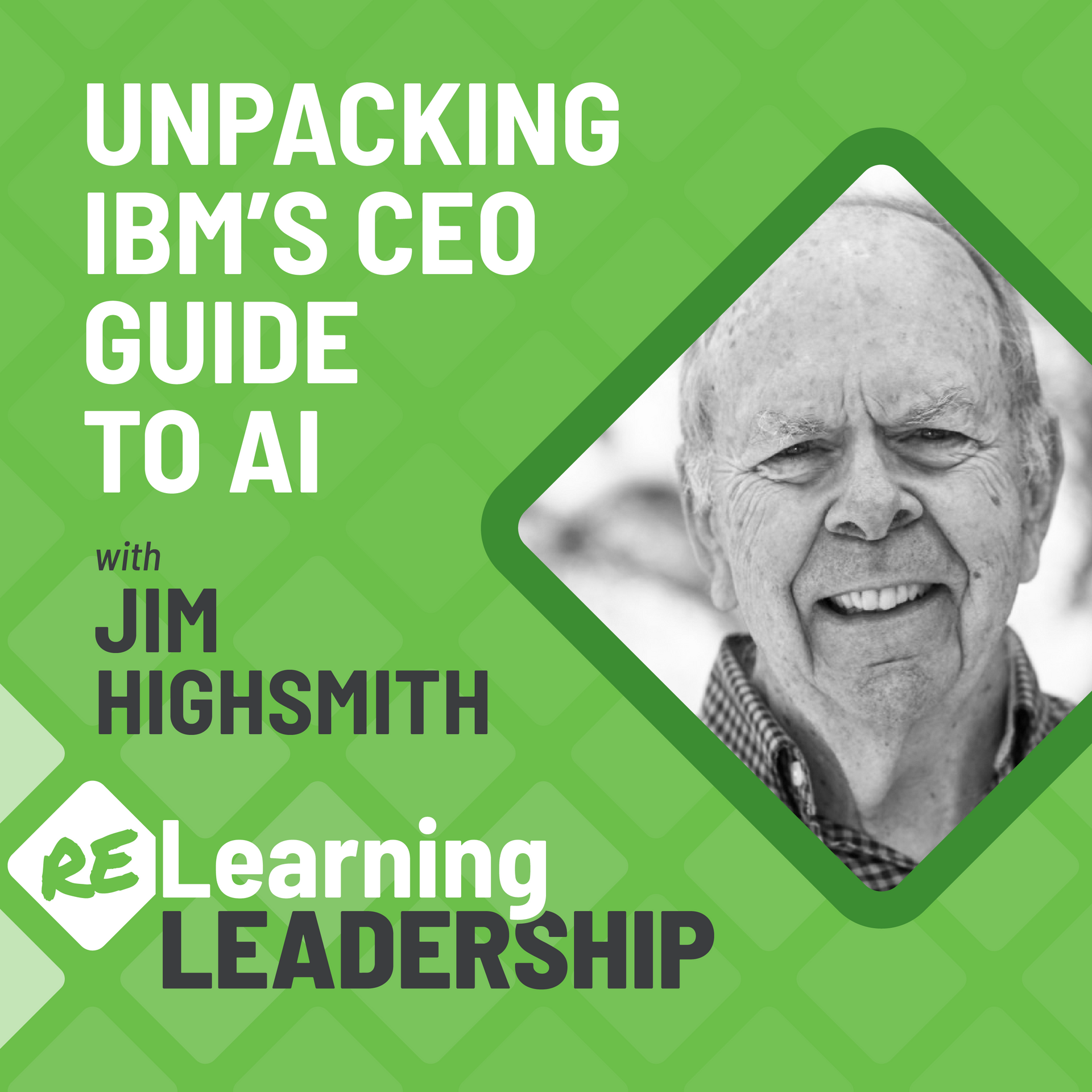50: Agile Adaptive Leadership with Jim Highsmith
What is Agile Adaptive Leadership?
In this episode of (Re)Learning Leadership, Pete welcomes a true agile pioneer, Jim Highsmith. Jim shares how his career has evolved from NASA engineer to ThoughtWorks alum, as well as being a co-author of the Agile Manifesto.
In their conversation, Pete and Jim explore the fusion of agile and adaptive principles, shedding light on how these concepts can revolutionize leadership in a rapidly changing world.
Jim Highsmith, Agile Pioneer
While Jim Highsmith retired from ThoughtWorks in 2021, he continues to share his 60+ years of expertise, wisdom, and insights from roles across the industry as an IT manager, product manager, project manager, consultant, software developer, and storyteller.
Jim has been a leader in the agile community for 30+ years, notably as a co-author of the Agile Manifesto, founding member of The Agile Alliance, co-author of the Declaration of Interdependence for project leaders, and co-founder and first president of the Agile Leadership Network.
Connect with Jim
Relearning from this episode…
Business Agility to Prepare for Turbulence
Agile-adaptive leadership is critical in preparing for a turbulent future. In a world marked by climate change, pandemics, geopolitical unrest, and other challenges, the ability to sense and respond to external factors becomes paramount. Being adaptable, adventurous, and inspiring leaders who can lead their organizations through change and uncertainty.
Agile Plus Adaptive, Not Versus
While agility is associated with flexible and resilient outcomes, adaptability represents a dynamic, iterative process of sensing, acting, learning, and continuous improvement. The combination of both concepts, agile and adaptive, in leadership, is seen as a powerful approach, as it offers a more comprehensive perspective on effective leadership. And it is not just relevant in business; it can also contribute to creating a world with leaders who can more effectively address global challenges.
Explore:
Related Episodes
14: I Wasn't Born a Leader
Pete Behrens welcomes us to season 2 with a personal story of his own accidental leadership journey as a student, employee and founder. Through his story, he hopes to connect, inspire, and challenge us all to become better leaders, more adaptive leaders, more diverse leaders, and more humane leaders.
5: Rebuild Your Leadership Habits
Crystal Mills, a Regional Vice President for a Canadian credit union, shares her rollercoaster story exploring the highs and lows in rebuilding her new leadership habits amid overwhelming stress and anxiety. Both Crystal’s story, and our discussion following, is with Jasmine Kernaleguen, a leadership disruptor who inspired Crystal’s new leadership path and engaged Crystal on her journey.
Recent Episodes
Episode Transcript
Pre-Intro
We’re telling agile teams, “Be flexible. Be agile. Change. Be open to change.” And at the same time, we were imposing the project management Iron Triangle on them. [Laughs] Focusing on cost. “You've got to be within 10% of the scope, scheduling, and cost, but we want you to be flexible and adaptive!” [Laughs]
Intro
Pete Behrens:
Jim Highsmith is one of my mentors in agility and leadership. His involvement in the formation of the Agile movement, along with his early authored books on adaptive software development and agile project management was foundational in my early transformation into more Agile ways of working. One of the things I love most about Jim is his pragmatic approach. He stays clear of frameworks and processes and focuses instead on principles and practices that actually improve business, performance, and health.
Jim's career has spanned over 60 years, including NASA, working on the Apollo Mission as an engineer, to project management, to advising for Cutter Consortium and ThoughtWorks, some of the early voices that I looked to in the Agile movement. He co-authored the Agile Manifesto. He started and formed the Agile Leadership Network. And author of a half-dozen books that span a quarter-century. So, when I say we have the expert in the intersection of agility and leadership, I hope you'll listen. I'm certainly excited to have a conversation with Jim, and I hope you enjoy it as well.
I just, you know—kind of as a kickoff—I mean, you started your career when computers still required punch cards, I understand. I'm curious, kind of, you know—just even in the formation of you coming—like, that was probably pretty radical, coming into a computer engineering discipline, back in those days. How did that happen for you?
Jim Highsmith:
Well, it was interesting because when I was in undergraduate school—and I graduated in 1966 with an electrical engineering degree. And there was a little if no computer stuff in the program that I was in during that period of time. I mean, we designed circuits with transistors the size of an end of a pencil. You know, the eraser on the end of a pencil. And today, you get five billion on a chip. [Laughs] And so, it's quite a bit different. And one of the things that—you know, looking back, I think about—is the fact that we did a lot of things from a programming standpoint back then, to compensate for the fact that memory was so expensive and cycles were so costly. And so, you really were at the mercy of, you know, memory limitations and cycle limitations. And so you did things that were—today, look screwy, like two-digit year fields instead of four-digit year fields that yielded the Y2K problem. We weren't worried about Y2K back in 1970! [Laughs] We were worried about two digits.
Pete Behrens:
Just pass that onto my generation, you know! [Laughs]
Jim Highsmith:
Well, you know, how many programmers today are looking forward to the year 10,000?
Pete Behrens:
Exactly, yeah. Well, it's interesting—even going back. Like, there's always a reason. Like, we think, like, “Oh, why didn't you just think of that?” Well, you did! You just optimized to a different solution, to a different problem, right? You optimized to that space and the memory you had to deal with back in those—so, from that time at NASA and Apollo to your influence in the Agile movement, I feel like I'm missing that little gap. And maybe, as a summary, how did that gap occur for you, getting into being a, you know, a formation member of the Agile Manifesto and writing some of your early books on Agile and adaptive software development?
Jim Highsmith:
Well, probably the main turning point in my career happened in about 1980. And I really got into the whole structured methods area, and then the case tool era, where a case tool became very prominent. They were sort of the first tools that supported software engineers. And then—the 1990s I really call the roots of Agile, because that's when a lot of the Agile people got started. So that's when Scrum got started; that's when XP got started. And I started working in the early 90s on a rapid application development approach. And that's what kind of got me started. And I worked on several projects. I worked for one of the big computer companies, Amdahl, at the time, that had a rapid development tool on the mainframe. And I engaged with their marketing people to build a short-term rapid application development experiment that we would take in to clients. And we'd build that application in a month using one-week iterations. And that was back in the early 90s. And so, that's what got me started.
And then, in the later 90s, I ended up meeting Martin Fowler in New Zealand. We were both speaking down there, and then he introduced me to Kent Beck. And Kent Beck invited me to a meeting, and that—which eventually ended up being the meeting for the Agile Manifesto. So I came up through the structured methods rank. Kent Beck and Martin Fowler came up through the Object-Oriented (OO) ranks, and we sort of met in the late 1990s.
Pete Behrens:
Fascinating. Yeah, I was—I think I was in a parallel world, working on case tools, working on RAD and JAD and iterative development in the 90s. And then, kind of, jumping over into that Agile space. You know, one of the things that I've always appreciated about you, Jim, is—I feel like, even early, you weren't as much about frameworks and process. You're about principles and practices of good software development, good project management, just improving work—right?—and culture and health and all those things. You've also tended to be on that side of—even as you switch from adaptive to agile, you always keep combining those two words: agile, adaptive, adaptive, agile. I'm curious about that. Like, they seem like the same word, just different nuances. Why is it you keep connecting those two words?
Jim Highsmith:
Well, to cover all the bases, for one. (laughter) And, you know, my first book was Adaptive Software Development. And what adaptive brings to it, for me, is this sense of an underlying metaphor of complex adaptive systems. Because I think software development is a complex adaptive system. And so, that really is an important piece of the adaptive word, for me, that I started using many years ago. I wrote a book in 2014 or ‘12, something like that, called Adaptive Leadership, which was basically an e-book. So, I've always sort of been associated with the word adaptive. And as I got to thinking about it—because I did want to combine them. Agile, to me, evokes the outcome, kind of, flexible, resilient kinds of things. Whereas adaptive evokes for me, kind of, a sense of an adaptive life cycle. Of sensing where you are, acting on that, and then learning from the results and going back through that iterative circle. So the agile is sort of the outcome and the adaptive is sort of the process, if you will. And I also want to use them together, because agile by itself has kind of become so ubiquitous. And there's so many people that are, you know, for it or against it that I want to just, kind of, stay away from that. So, I didn't want to call it just agile leadership, so it kind of came to me to combine them.
The other thing it does, which is kind of incidental, in a way, is—it has the same format as command-control, command-based control. And this is a juxtaposition to that. You know, there's a lot of new management theories out there, servant leadership and more. And we haven't really settled on a one-term, like they did on command-control. And maybe we don't need to do that, but there's many different terms out there that evoke different kinds of things.
Pete Behrens:
I like—I really like your last point there, right? The command-control has been a very, you know—and certainly the agile movements picked up on that as the antithesis, right? In terms of—and so, having a hyphenated word on the other side, right? Agile-adaptive certainly, kind of, calls that out. Do you see this agile-adaptive leadership as just—I get this question a lot. Is it different than just good leadership? How would you answer that question?
Jim Highsmith:
Well, you know, that's a question I started answering, or asking, myself as I finished up the book a couple of months ago and started looking at what I wanted to get into next. And so I got to reading a bunch about business agility, and this is how I ran across the Business Agility Institute. And we got connected. And so I kept reading this stuff, on the business agility sites, that, to me—this sounded like good management. And so, I was wondering what the difference was. And at the same time, I just happened to pick up a book by Jenny Romiti, who was a former CEO of IBM for eight years. And as I read about her journey, trying to instill adaptive—I mean, agile—and design thinking into IBM, I began to say, “Here's a CEO that really understands agility, whether they call it that or not.” I, you know—they probably don't—but really understands at a high level in the organization what that’s all about. And so, I really appreciated that.
I think there are really three things that I talk about. Adventurous. One of the things that I talk about in the book a lot is—compare my mountain climbing adventures with software adventures. And some of the same kinds of things are involved, like prudent risk-taking, you know, not wild-ass risk taking, but, you know, something that's reasonable and is something that you've thought through and you understand the consequences.
The second thing that I think an agile adaptive leader needs is to be inspiring. If you're going to change something, if you're going to change the culture, you're going to change your organization, you've got to engage and inspire the people around you. And so, that's a really important point—is to be able to do that. Is that important for our management in general? Yes, but I think it's more important in an organization where you're trying to change stuff. That's really important.
And the final thing is to be adaptive, to have some sort of adaptive process that you go through yourself. One of the things that I'm talking about at a conference here in a couple of weeks, in several weeks, is applying the history to what's going to happen with AI and quantum computing. And what does history have to say about the evolution of other kinds of technologies? And I think—so, understanding part of the history of management helps today in, sort of, figuring out what's different and what's not different. I think a lot of it is a matter of emphasis. But, again, I think it goes back to—adventurous, inspiring, and adaptive are three components of agile adaptive that I think are important.
Pete Behrens:
Yeah. I think, you know, what you're hitting on there is—yes, agile adaptive leadership is good leadership in a context of change. And there might be good leadership in other contexts, but it's that change context, the complexity context, right? It's the speed context. So, yeah, I think what you're indicating is that adventure, the inspire—because of change, it's causing so much confusion. Without that clear direction, without that, sort of, bold step into that unknown. You're not going to be successful as a leader.
I'm curious—from you, like, it feels like, to some degree, our careers paralleled, time-shifted a bit, right? Engineer to, kind of, project management, leadership consulting, to leadership and organizational advisory. I look at those three layers in the organization, right? The teams and engineering work that's going on. The project management and the portfolio management and all the program management that happens in the middle tier. And then the organizational tier, right? That disconnect between those three layers is something we often see. And I'm curious—is that something you've seen over the course of your career? Do you see that changing, or how are you seeing those three tiers and the way they work or don't in organizations?
Jim Highsmith:
I find those layers isolated from each other quite a bit. And let me—I went through the video that—one of the introductory videos that you made about playing different games.
Pete Behrens:
Yeah, yeah!
Jim Highsmith:
And one of those games that I ran into, you know, in the mid-2000s—I've kept running into it. Is—we’re telling agile teams, “Be flexible. Be agile. Change. Be open to change.” And at the same time, we were imposing the project management Iron Triangle on them. [Laughs] Focusing on cost. “You've got to be within ten percent of the scope, scheduling, and cost, but we want you to be flexible and adaptive!” [Laughs] And so, the measurement system and the management system, and the engineering system were completely opposed to each other. And so, that's one of the things that led me to develop what I call the agile triangle, which—I value, quality, and constraints. And the constraints or scope, schedule, and cost. That doesn't mean that those are not important, but it means that it constrains how you could deliver customer value. And if you use a triangle like that, you've got, by its very nature—tells you that I'm going to be—there's going to be some alignment problems in there. And I'm going to help align management and the delivery team.
I worked with a team in the early 2000s to deliver to a fixed date. And the way we did that is—we, early on, we aligned, between the development team and senior management, what we were going to do. And how we were going to do it, and how they had to adapt, as we went forward, in order to meet that fixed date. That we might have to cut back some of the functionality, that we might have to do some other things, add some resources. But we would meet that fixed date, and we did. And so, I think it's that sort of alignment that has gotten out of whack in some places.
And I think it's—unfortunately, it still is. Because, again, because if you view agility or agile as an engineering, global, discipline, which I think a lot of people did in the beginning and, unfortunately, to now, it's not going to affect me as a manager. And one of the reasons I started the Agile Project Leadership Network in 2004 and ‘05—was that I saw this disconnect happening, and I saw the agile community basically saying, “We don't need any damn project management!” Right? [Laughs] And “We don't need anything.” In fact—
Pete Behrens:
“We don’t want management. We don’t want project management. We don't want dates.” Yeah.
Jim Highsmith:
That’s right. “We just want complete autonomy to do whatever we want to do whenever we want to do it.”
Pete Behrens:
And it's no wonder we turn off leaders with that message, yeah.
Jim Highsmith:
Yeah. What I was talking about was—we still project management, but we needed a different type of project management. That, in fact, project management was going to help us bridge that gap between the engineering teams and the management team. And the project managers, the good ones, the ones that were agile and adaptive, would help us do that. So that was the message I was trying to get across.
Pete Behrens:
So, I want to just pull out the point you made on the Iron Triangle, because I think that's an important one that I think we've failed to learn. And what you said is—the Iron Triangle of old—right?—time, budget, and scope, right? That's the traditional Iron Triangle. You've collapsed all those into a single point, constraints, and added value and quality, which always should have been there in the first place. And so, what you've done is—you've created—what do you call this? The Adaptive Triangle? The Agile Triangle?
Jim Highsmith:
The Agile Triangle.
Pete Behrens:
The Agile Triangle. I love it. I love that. Just the visualization of that, to me, is really powerful. So, with regard to leadership—so, I feel like, to some degree, we're not speaking to leaders properly on agility, right? You mentioned—we talk tech agility, we talk frameworks, we have IT, right? Most leaders associate agile—because of where it was born and where it grew up in software and technology—as a solution to build products. Yet, today, we're seeing this transfer into business. What is it, you think, leaders need to hear? Or what should we, as, you know, the people trying to promote agile ways of working in organizations—what is it we need to be saying to these leaders or connecting to these leaders on that brings this a little bit broader?
Jim Highsmith:
Well, I think to bring it a little bit broader, I use the term agility a lot, as opposed to just agile. And it's, you know—and so, whenever anybody asked me, “What's the purpose of agility?” Or “What's the purpose of business agility or enterprise agility or any of the agilities?” And when I read things from the Agile Business Consortium, or even the Business Agility Institute, they're sort of long, well-worded, but unremarkable, and un-memorable phrases, you know? “A set of organized capabilities, behaviors, and ways of working in business and freedom—” You may even have been involved in writing this definition!
Pete Behrens:
Blah, blah, blah, blah, yeah! A bunch of platitudes, yeah.
Jim Highsmith:
So, for me, I wanted a really succinct statement. So “the purpose of agility is to help prepare for our turbulent future.”
Pete Behrens:
Business agility is to help prepare for our turbulent—I would even suggest present—and future, yes. Yeah.
Jim Highsmith:
Well, future’s tomorrow. And you can substitute agility or business agility or enterprise agility, you know? But it is to help us prepare for our turbulent future. And you don't have to say much about the turbulent future, other than to look at, you know, Maui and Florida and, you know, the climate change aspect. We've just gone through a pandemic. We've got war in Europe, you know? There's a lot of factors that are huge factors in the world today. And so, not only do we—do I—think agility is appropriate and helpful in a business context, I think it's appropriate in a wider context of needing more leaders in the world who are a little bit more adaptive and agile than some of the ones we see today.
The other thing, too, and I talked about this adaptive life cycle. I think there's a point in here that a lot of people miss as being the important part. And that is the front end of that life cycle, which is a sensing process. To sense what's going on out there in the world and synthesize it into what's important for you. There's so much out there, so much information, so many different things going on that how you process that, how you sense what's going on, and how you react to that is really important.
Pete Behrens:
I love how you're connecting into agility—is as much about seeing as it is about acting, right? And we talk about that a lot. Like, agility is often perceived as a movement, as a motion, as a decision, as a shift. But the problem with that is—if we're not doing that with that sense, without sensing, we're doing action for no purpose—right? And it's that sensing that creates the smart movement. And that—to us, when we start teaching agile, it's as much about that awareness you're creating for the shift that's critical.
Jim Highsmith:
Yeah, and I’ll give you a concrete example of that at the team level. We were failing, I think, in a lot of situations, to sense why we’re doing something. What are the goals that we’re really shooting for? I hear a lot of complaints these days about feature factories, about just churning out features because we want to get our velocity up. And without much attention to, “What are the product goals that we’re trying to reach? What are the customer goals that we’re trying to reach? What are the business benefits we’re trying to gain?” And so, a lot of that gets lost. And so, I think—this setting the stage is an important piece that’s getting lost a lot of times.
Pete Behrens:
Yeah. So, with regard to agile adaptive leadership, are you seeing some success today? Where are you seeing success today in business or individual leaders that, maybe, you could point to?
Jim Highsmith:
Well, since I have retired—a couple of years ago—in the last couple of years at Thoughtworks, I didn't have much customer interaction. I was really working on a very specific digital transformation initiative inside the company. I haven't worked directly with too many organizations the last few years, but I have worked directly with a few people that I think, kind of, embody good leadership. One of those is Jenny Romiti. As I said, I've only read her book; I've never met her, never talked to her. But if you read through her book, she's got some ideas that I think are really more agile than adaptive. For example, they knew where they wanted to go with this agile adaptive, I mean, agile and design thinking. They knew that they had to move more heavily into AI in the cloud and a couple of other technologies. Where were they going to get the money to do that? So they had to make a decision to sell off a major part of their business, the manufacturer of chips, that was part and parcel of IBM's history. But they had to free up that capital in order to fund these other kinds, these other initiatives. And I think, sometimes, people at the lower level don't don't appreciate what kind of decisions those are. They're very difficult decisions, because you're impacting a lot of people. But it's the kind of thing—you've got to set yourself up to spend money for new things. So, for example, IBM put five billion dollars into training for this new agile and design training—for design thinking—over a five or ten-year period. That's a lot of investment in turning the corner. So, I really think she is one of the people that I would hold up.
Somebody else is Heidi Musser. She was the CIO and VP at USAA for many years. And she was—she's now retired and is the board chair of the Agile Alliance. So, she really brought Agile into several organizations. But USAA was one of them that she worked with quite a bit. Somebody else that I know from many years ago is Jeff Smith. And he turned—he started doing a major transformation of Suncorp in Australia in the 2008-2009 area and has been involved in several very large Agile transitions since then, from a CEO and both a CEO and a CIO in a COO position. So he's somebody that's had a lot of experience. And one of the interesting things in talking to Jeff is—he asked questions about things that few other CEOs are asking questions about. He really understands agility; he really understands the technology like few CEOs I've ever had contact with. And so, I think those are a couple of examples of people that I think, kind of, exude this agile adaptive leadership style.
Pete Behrens:
Sounds like a few good people to bring on our podcast here! I'd love to—love the fact that two out of three of those are female leaders, too.
Jim Highsmith:
Yes!
Pete Behrens:
Yeah, yeah.
Jim Highsmith:
So, you know, one of the things you get from a female leader is—if you look at performance as getting stuff done. And people—as working empathetically with people. I think, in general, women are better at balancing those than we are, than the guys are. Performance and people. Performance and people. And sometimes those things get out of whack. And so, in some ways, I think the Agile movement may have gone so far in the area of self-organizing teams and autonomy, and those kinds of things, that we've lost sight of the fact that those teams also have to be accountable and aligned with management's needs. So I think you can go back and forth on those two things. But there was an article written, I think, somewhere by McKinsey recently, that talked about the balance of those two things and how important it was for the overall performance of the organization.
Pete Behrens:
Yeah, yeah. The study—I think it's Price. They did research on performance and health and the companies that over-index on performance, actually underperform the companies that index on health as a balance to performance. [Beyond Performance: How Great Organizations Build Ultimate Competitive Advantage, by Scott Keller and Colin Price (2011)] We'll make a reference to that book in the notes. But, yeah, that's the word, language, we tend to use. Performance and health. How do you find that balance? I look at it as, like, an athlete. You've done a lot of adventurous things in your life. Performance is that one-day thing. Like, “Can I perform this race or this mountain climb or this hike?” Health is my ability to do that ten years from today or five years from today or, you know, two weeks from now, right? It's that continuous performance over time. And I think a lot of organizations get so maniacal because of the speed of change. They just, kind of, zoom in on that performance element and kind of lose aspect of some of the health.
So, just, speaking of the Agile movement, we're seeing a lot of, kind of, what I would call, kind of, solutionism, right? Frameworks and tools and just taking things and trying to make them into recipes—is the way I call it. I'm curious how you're seeing the Agile movement today.
Jim Highsmith:
Well, I think part of it is that the Agile movement has become so ubiquitous, you know? Some studies have said that 75 or 80 percent of the companies in the world are using Agile, you know. Now we know what that means. [Laughs] But for some companies, I mean, it doesn't mean much. I always refer to Jerry Weinberg's Law of Raspberry Jam. The wider you spread it, the thinner it gets. And so, out on the edges it gets pretty thin in terms of the knowledge.
I’m a part of a group that's just beginning to think about an idea we call Rejuvenating Agile. And because there's a lot of stuff in the Agile movement that's really basic and really important, and we need to keep it. And there's some other things in the Agile movement that—we really need to to extend the basic values and principles of agility into some different areas. And so, what do we keep, and what do we extend? And what about the—what is it about the Agile movement, as it got started, that's still relevant today? And I think, you know, people keep asking, “Are we going to rewrite the manifesto?” No, we're not. It was a document at a particular place in time, a particular group of people. The agile movement, which was kind of the light methodology movement at the time, was very, very tiny. And today, it's huge. You'd never write a manifesto today that would please everybody. And I wouldn't want to.
Pete Behrens:
The other word I picked up on is that word interdependence, right? Your declaration of interdependence. And that ties into your advice to leaders, right? It is so interdependent. There is no one leadership, there is no one leader, there is no one idea, right? It's—how do you bring that system together in an effective, efficient way to solve problems, right? And that, to me, is the fundamental root of what we're working with today—is helping leaders navigate that complexity, that interdependence in our organizations, and even cross-organizational, you know, industry.
Jim Highsmith:
I remember a story. I was listening to a woman who was head of some educational organization. She was telling a story about being on an airplane, riding in first class, sitting beside this guy. And so, they got to talking, and he said, “What is the one thing we could do with education that would improve it?” And she said, “Getting rid of the people who think there's one thing that will improve it.” [Laughs] But I think you're right. It's not a singularity there that—you know, this type of leader or this type of person. You know, if you look back—I did a Google Search, and I don't remember exactly what the number was, but there's something like 15,000 books on leadership that have been written, or probably more than that.
Pete Behrens:
Oh, yeah.
Jim Highsmith:
And so, you know, am I going to read all 15,000 and extract, you know—different leaders look at different things. And so you've got to look at what—as a leader, you've got to look at those things that seem relevant to you.
Pete Behrens:
Well, Jim I really love the fact that you have not bowed out of this community and checked out. I love the fact that your voice is still being heard, that your messages are still being told. Because I think you continue to add value to our community today. And—whether it's a revival, you know, it's going back to our roots. I think Alistair Cockburn, you know, has the heart of agility, right? I love his message around the heart and the values, right? I think there is some sense of—it's spread too thin, and how do we bring back some of those core values? And so, I'm appreciative of your voice and you joining and sharing with us today.
Jim Highsmith:
Well, thank you! It's been a lot of fun.
(Re)Learning Leadership is the official podcast of the Agile Leadership Journey. Together, we build better leaders. It’s hosted by me, Pete Behrens, with contributions from our global Guide community. It’s produced by Ryan Dugan. With music by Joy Zimmerman. If you enjoyed this episode, please subscribe, leave us a review, or share a comment. And visit our website, agileleadershipjourney.com/podcast, for guest profiles, episode references, transcripts, and to explore more about your own leadership journey.

